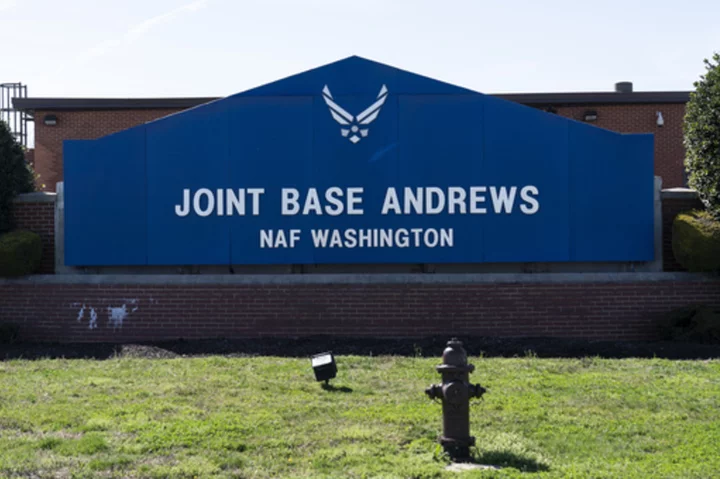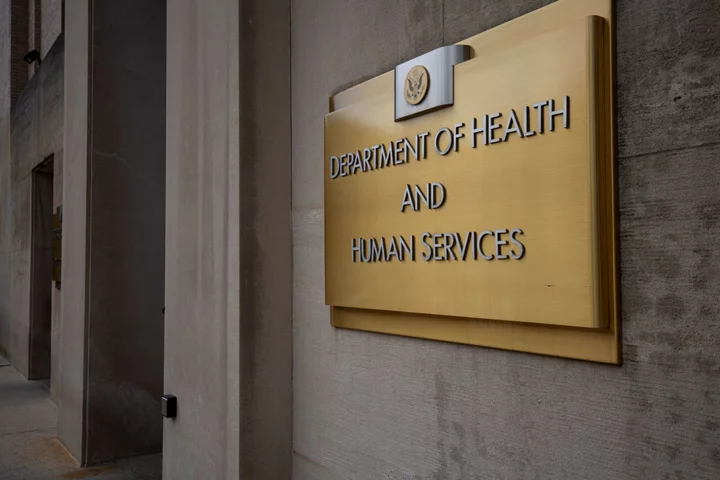NORFOLK, Va. (AP) — People living in and around the nation's capital on Sunday experienced a rare, if startling, sound: A sonic boom.
The boom was heard after U.S. military dispatched a fighter jet to intercept an unresponsive business plane flying over restricted airspace.
The Air Force gave the F-16 permission to fly faster than the speed of sound — something civilian aircraft rarely get to do — as the jet scrambled to catch up with the Cessna Citation. The result was a thunderous rumble that resonated across a metropolitan area that's home to more than six million people.
Below is an explanation of what sonic booms are and their history in the U.S.
WHAT IS A SONIC BOOM?
Sonic booms are thunderous-like noises that are heard on the ground when airplanes overhead fly faster than the speed of sound. That speed is typically about 760 mph near sea level, but can vary depending on the temperature, altitude and other conditions, according to the Congressional Research Service.
As the plane speeds through the air, the air reacts like fluid. Molecules are pushed aside with great force, “and this forms a shock wave, much like a boat creates a wake in water,” according to NASA.
“When this line of shock wave passes by, listeners on the ground hear a very loud noise," according to an explanation from Australia's University of New South Wales.
Anthony Brickhouse, an associate professor of applied aviation sciences at Embry-Riddle Aeronautical University, added: “The different surfaces of the aircraft are basically punching through the air. The air actually rushing over the surfaces of the aircraft will cause a sonic boom.”
“When the Space Shuttle orbiter was coming back into the Earth’s atmosphere, you would typically get to sonic booms,” Brickhouse said. “The SpaceX Dragon capsule created sonic booms.”
Brickhouse said the F-16 flying over Washington on Sunday was “probably trying to go as fast it could to catch up” with the wayward Cessna airplane.
The F-16 Fighting Falcon can fly 1,500 mph or twice the speed of sound, known as Mach 2, according to the Air Force.
WHAT IS THE HISTORY OF SUPERSONIC TRAVEL — AND BOOMS?
In 1947, test pilot Charles “Chuck” Yeager became the first person to fly faster than sound in an orange, bullet-shaped Bell X-1 rocket plane. His exploits were told in Tom Wolfe’s book “The Right Stuff,” and in the 1983 film it inspired.
In the movie, someone on the ground asks, “What's that sound?” as Yeager's plane flies above and breaks the sound barrier.
Interest in supersonic flight initially focused mostly on military planes, according to the Congressional Research Service. But it grew to include supersonic civil aircraft in the 1960s.
For example, the Soviet Union became the first country in 1968 to fly a supersonic passenger plane, the Tupolev TU-144. But a fatal crash at the 1973 Paris Air Show ended that ambition.
In 1963, the U.S. government announced a major program to develop a supersonic passenger aircraft. But serious problems soon surfaced, including massive development costs and doubts about financial viability. The program was terminated in 1971.
During the 1960s, NASA collected data on the effects of sonic booms on people who experienced them. Experiments showed that many described the booms as “annoying,” “irritating” and “startling,” NASA found.
In 1973, the Federal Aviation Administration prohibited supersonic flights over land, “based on the expectation that such flights would cause a sonic boom to reach the ground,” the Congressional Research Service wrote.
The Concorde, an Anglo-French supersonic jetliner, saw success for a number of years after making its first commercial flights in 1976. However, its ear-rattling sonic booms irritated people on the ground and led to restrictions on where the jet could fly.
In the U.S., the plane flew mainly to New York and Washington. With four jet engines and afterburners, the plane could fly at twice the speed of sound and cruised at close to 60,000 feet, far above other airliners. It promised to revolutionize long-distance travel by cutting flying time from the U.S. East Coast to Europe from eight hours to three and a half hours.
The Concorde never caught on widely. The plane’s economics were challenging, and its sonic booms led it to be banned on many overland routes. Only 20 were built; 14 of which were used for passenger service.
In 2003, British Airways and Air France both stopped Concorde service.
Sonic booms are still heard in the U.S. from the nation's military aircraft. In 2021, a sonic boom caused widespread concern that there was an earthquake on the Oregon coast.
Military officials with the 142nd Wing of the Oregon Air National Guard said a single-pilot F-15C and a two-person F-15D Eagle had inadvertently reached supersonic speeds as they flew over the Pacific Ocean.









